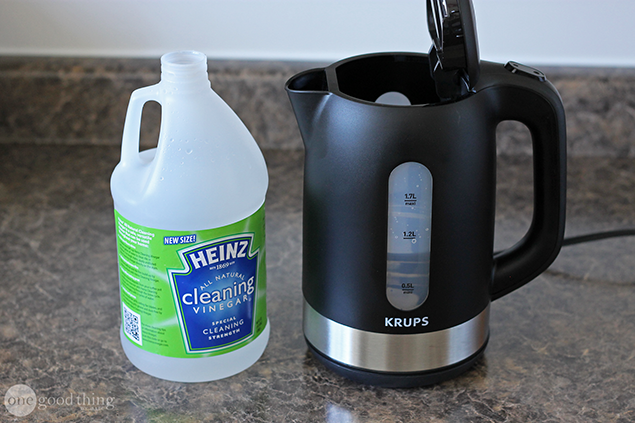
Clean Your Electric Kettle For A Better Morning Brew
Electric kettles have become incredibly popular because they can bring water to a boil in a fraction of the time it would take using a stovetop tea kettle (or even using a microwave, for that matter!) Unfortunately, this humble workhorse is often overlooked where cleaning is concerned.
It’s important to clean appliances that use water regularly, especially if you have hard water like I do! Limescale and other mineral deposits can build up inside appliances over time, and eventually impair their performance or shorten their lifespan. This is especially true for appliances you use daily, such as your trusty electric kettle.
Related: 6 Unexpected Ways To Remove Rust With Things You Have At Home
If left unchecked, that gunky buildup (called “kettle furring,” which is gross) can really spoil your morning tea or coffee if flakes of it end up floating in your drink. To avoid that, today I’ll show you easy ways to descale, clean, and care for your electric kettle to keep it in good working order for a long time to come!
How To Clean Electric Kettles: 2 Easy Methods

1. Vinegar Method
Start by filling your kettle about halfway with equal amounts of water and white vinegar. Bring the kettle to a boil, turn it off (if it doesn’t turn off automatically), and allow the water and vinegar mixture to sit in the kettle for 15 to 20 minutes. Discard the water and vinegar after use.

2. Citric Acid Method
Fill your kettle halfway with water, and bring it to a boil. Once it has boiled, turn it off and add 1-2 tablespoons of citric acid powder to the water. Allow the water and citric acid mixture to sit in the kettle for 15 to 20 minutes, then discard.
Note: Some people recommend descaling kettles with sliced lemon, but I prefer citric acid. It packs more of a punch against limescale, and I don’t have to worry about any pulp or residue getting left behind.
Don’t Forget These Finishing Touches!

1. Scrub Stubborn Residue
Depending on the state of your kettle, you may find that it needs a bit of additional scrubbing to get it clean after using either of the descaling methods above.
Use a soft scrubber pad (I LOVE these Scrub Daddy pads!) to gently scrub the inside of the kettle, then rinse well with fresh water. You can also use the scrubber to clean the exterior of the kettle if it needs it.

2. Check The Filter
If your kettle has a filter near the spout like this one does, make sure to rinse it clean often. If you find scale build-up on the filter, simply soak it in a small glass of vinegar for several minutes to loosen the build-up, then use a scrubbing pad or brush to get it clean.

3. Rinse Thoroughly
Once the kettle is clean, boil and discard a couple of kettles of fresh water to ensure that no vinegar taste or smell gets left behind. This step is less important if you’re using the citric acid method to de-scale, but it’s still a good step to do!
Related: All-Natural Tea Treatments For Common Ailments
Additional Tips
- Empty your kettle after each use to help reduce mineral buildup. Try to boil only as much water as you need to eliminate waste.
- Never immerse an electric kettle in water, which can damage the heating element.
- Clean the outside of your kettle at least once a week to keep that shiny, new look.
- Clean and descale your kettle every few months, or more often if you have hard water.
- Use distilled or filtered water in your kettle to prevent mineral deposits.
- In addition to boiling water for tea, you can use a tea kettle to boil water for oatmeal, instant mashed potatoes, instant soup, hot chocolate, and other foods and drinks.
- A clean kettle is a green kettle because it uses less energy and extends the life of your kettle.
Explore Cleaning Tips For Other Appliances
- Now that your kettle is sparkling clean, check out these other cleaning tips for small kitchen appliances:
- How To Clean Your Toaster So It Looks Brand New!
- How To Clean A Microwave: With AND Without Vinegar
- How To Deep Clean Your Instant Pot And Keep It Like New
How often do you clean your electric kettle?

 20 Comments
20 Comments

























